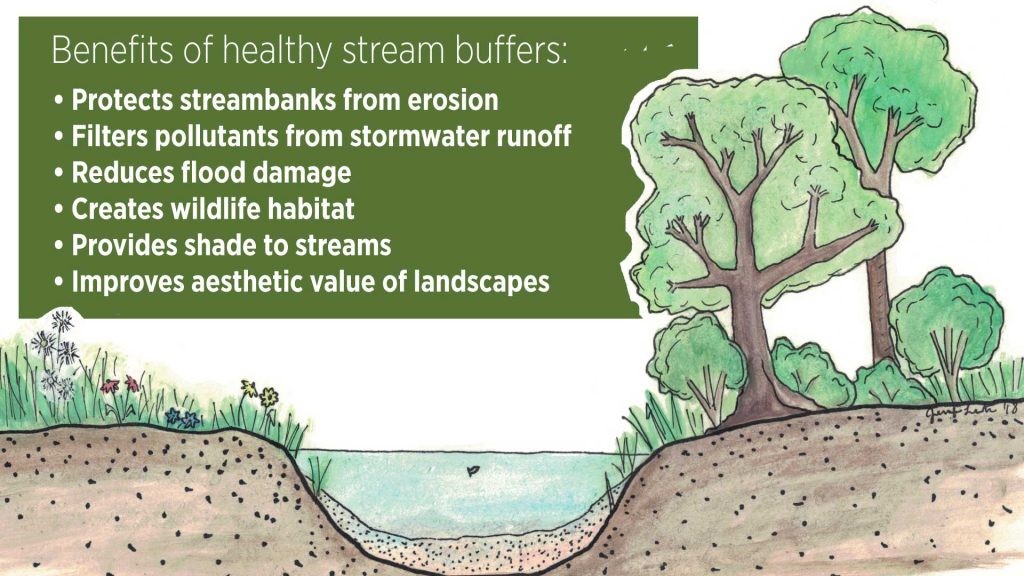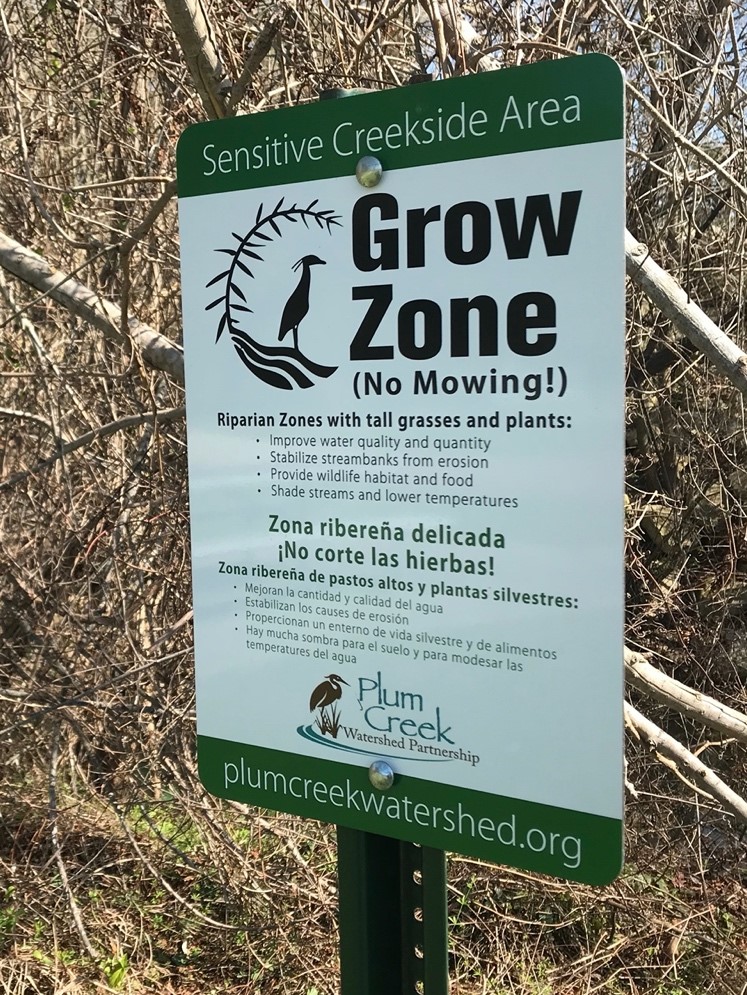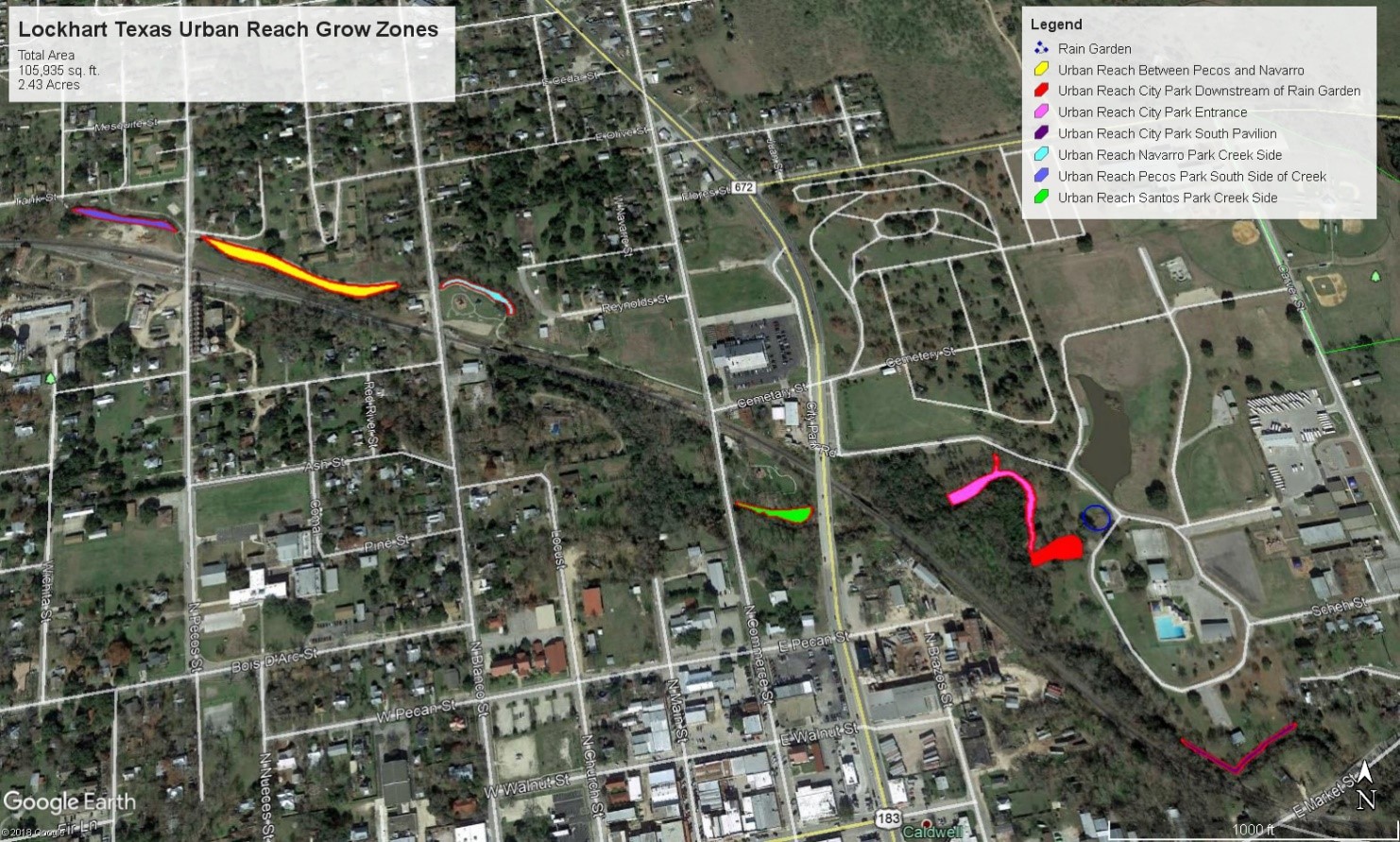When left in a natural state, streams are capable of performing myriad functions that are of value to humans, and the importance of these functions are the reason that humans have historically been drawn to live near streams and rivers.
Over the past decade, concerns about the degradation of Central Texas watersheds have led to a boom in the implementation of stream restoration projects. These projects are most commonly designed to improve instream and riparian habitat, stabilize streambanks, minimize the impact of non-point source pollution and enhance biodiversity. The City of Lockhart has taken the lead in sponsoring the restoration of Town Branch Creek that runs through the heart of the City.
The 2014 Texas Integrated Report identified elevated bacteria concentrations and concerns for impaired habitat, nitrates, and total phosphorus in Plum Creek, segment 1810_02. The report also listed Town Branch, segment 1810A, a tributary of Plum Creek, with water quality concerns for bacteria concentrations in excess of the standard, depressed dissolved oxygen, and excessive nitrate levels. In May 2016, the two-year geometric mean for E. coli bacteria at the Clean Rivers Program (CRP) routine monitoring station on Town Branch, located in Lockhart’s City Park, was well over the 126 per 100 ml standard for bacteria. Just upstream of the CRP monitoring station, the City of Lockhart observed the following situations as possible considerations within their park and urban trail lands: Non-contiguous areas of invasive exotic plants, channel aggradation and increased sediment deposition, areas of excessive erosion, areas of excessive algae growth.
The following are common hindrances observed in Texas riparian areas:
- Farming, mowing, or spraying weeds or brush too close to the bank
- Logging and related timber harvest activities adjacent to the creek
- Manicured or altered residential or park landscapes next to the creek
- Prolonged grazing concentrations in creek areas
- Excessive populations of deer, exotics, or feral hogs in creek areas
- Burning in riparian area
- Removal of large dead wood and downed trees
- Artificial manipulation of banks, channels or sediment (bulldozing)
- Physical alteration of floodplain
- Excessive vehicle traffic in creek area
- Excessive recreational activity or foot traffic in creek area
- Excessive alluvial pumping or other withdrawals
- Excessive growth of invasive species that inhibit the ability of native riparian plants to do their job
- Low water dams and large reservoirs
- Poorly designed road crossings and bridges
Underlined above are some of the issues facing Lockhart that can be easily addressed by Best Management Practices (BMP). Some of the BMPs that will be used include Grow Zones, Rain Gardens, Interpretive Signs and the removal and replacement of non-native vegetation.
Grow Zones
These areas can be found all along Lockhart’s Spring Walkway and other locations found within the Parks System that are adjacent to Town Branch. The city has implemented these Grow Zones by letting the native vegetation to grow up and help stabilize the creek bank. This helps with erosion and helps filter out some contaminants. Historically mowing crews have mowed as close to the creek as possible. Though it looks better to the untrained eye it actually causes more damage than it helps. At first it looks unmaintained and rough but after secession takes place the unsightly species will start to be replaced by more attractive plant species.


